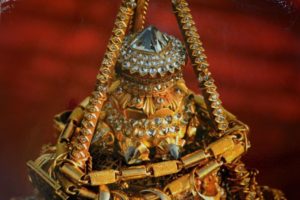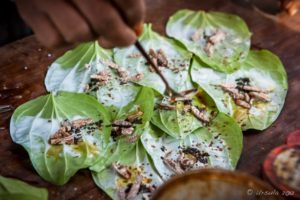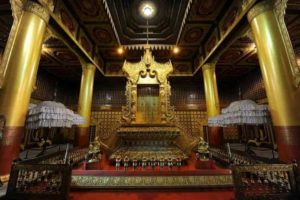
Diamond Orb
According to researchers Sanchi Stups of Bharat, that is India, are the prototypes of modern-day pagoda. Myanmar prototypes Baw Baw Gyi and
Feature tours are the best thoughts for your travel experience in Myanmar. The tours extend the sustainability of local destinations throughout the journey.
Our Small Private Group tours are designed for safety measure and escape
the crowd to see the highlights of Myanmar with enough downtime to relax,
reflect, and soak up the atmosphere.
Multi-day tours are organized into the depths of Myanmar and to see captivating nature, culture, local experiences, and traditions of the people.
ONE DAY TOURS are conducted by the tour guide to explore more about culture, history, community, and local lives for a full-day excursion in Mandalay and around privately.

Lotus and its petals are invariably found in holy places and on religious icons. They have become part and parcel of oriental art, iconography and painting.
Origin of Lotus in paintings goes back into six millennium old Indus valley civilizations of Mohinjodaro and Harrapa. Those were Dravidian civilizations. They had domesticated draught animals like cows and buffalos, beasts of burden like camels and elephants. They had built utility oriented, residential and storage buildings. They also developed and used picture writing for communication. They also used gems as ornaments.
Prehistoric people had to depend on the earth for all their needs. So they regarded her as a mother. They personified the Earth as a woman. Later a new race of Aryans moved into the Indus valley and ruled over Dravidians. They adopted some of the Dravidian deities, beliefs and customs. They brought with them writing system based on alphabets and vedic epics. Those epics contain Aryan history, mythology heroic tales and deities.
According to those vedic epics origin of this world is yoni which is a lotus flower with 1000 petals. Light opened the lotus petals and Brahmas came out of it and other living creatures also came out of that yoni. From that Lotus came a deity of Sri Goddess or Lotus Goddess. She also represents mother earth.
In Buddhist literature there is a passage referring the Lotus as… “a flower grown in water. Yet it does not get wet. In the same way the Enlightened one is born of the world but He does not get entangled with the carnal life of human beings.” …Buddhist literature also describes that there were five lotus flowers at the beginning of “Bada World” foretelling that there will be five enlightened ones (Buddhas) in this world. So these passages give lotus a high status in Buddhism.
So we can find Lord Buddha statues with a Lotus pedestal. Buddhist version of nativity scene is invariably painted with Bodisatta the child Siddhatta walking on Lotus flowers. Almost every religious building, shrine or edifice is usually adorned with young Lotus petal, aged Lotus petal, upright Lotus petal, or inverted Lotus petal.
Incidentally one of the motifs of Myanmar painting is Kanote which is nothing but twisted, curved, entwined or curled up lotus stems. (note: yoni means female sex organ in Sanskrit.)
Sourced: Myanmar Culture Traditions and Scenery, Cultural Varieties
by U Than Pe, Tour guide

According to researchers Sanchi Stups of Bharat, that is India, are the prototypes of modern-day pagoda. Myanmar prototypes Baw Baw Gyi and

According to researchers betel chewing habit came from majjima desa, that is present Indian subcontinent, along with Buddhism. The habit was certainly

Throne is symbol of royalty. It also embodies sovereignty. It is the seat of power. It passes from sovereign to sovereign. As